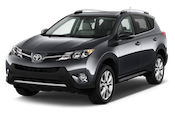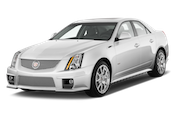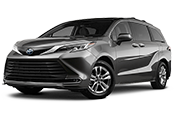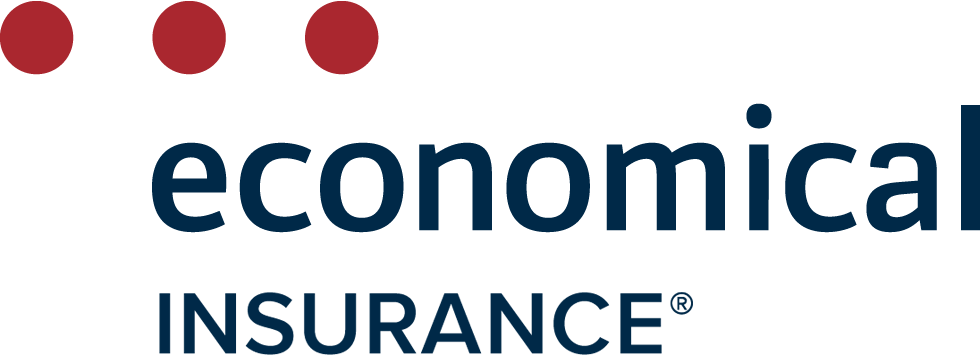
Cheap Ontario Car Insurance Quotes
Save an average of 21%* on Ontario car insurance when you compare quotes on InsuranceHotline.com
How to get the cheapest Ontario car insurance quote
Get multiple Ontario car insurance quotes in the time it takes to get just one
Enter Your Postal Code
Start with your postal code to begin!

Enter Driver Details
Tell us a little bit about your vehicle, driving & car insurance history.

Compare Your Quotes
Compare your car insurance quotes from more than 50 top insurance companies.

Pick Your Policy
Pick the insurance policy that's right for you to connect directly with the insurance professional of your choice.
We've got hundreds of 5 star reviews
2,247 reviews on TrustPilot. See some of the reviews here.
Fran
Curtis
Robert Clarkson
Vincenzina Perri
Keith
Dev
Georgia
Shirley Munro
Hoang Tran
Alnoor
Michael Benninger
Gene
D on
Robert
Remonia Thompson
Rich
Luis
| Cheapest Rate | $12,694 |
| Average Rate | $17,071 |
| Savings: $4,377 (26%) | |
| Cheapest Rate | $916 |
| Average Rate | $1,595 |
| Savings: $679 (43%) | |
| Cheapest Rate | $2,809 |
| Average Rate | $5,726 |
| Savings: $2,917 (51%) | |
How does Ontario auto insurance work?
There are three things you need to know about Ontario car insurance:
1. Ontario law requires that all drivers have auto insurance.
Not only is it a legal requirement for drivers in Ontario to obtain car insurance on their vehicle, but there are also minimal coverage types and requirements drivers must have, including third-party liability, statutory accident benefit, DC-PD, and uninsured automobile insurance. These requirements are baked into the standard auto insurance policy coverages offered by provincial providers. Drivers can choose to purchase additional coverage, or optional coverages, to provide themselves with more robust protection coverage to support their auto insurance needs.
2. Auto insurance in Ontario operates under a no-fault system.
Despite the name, no-fault insurance system does not mean that no one is at fault. Instead, drivers are required to go through their own insurance company when making a claim regardless of who is at fault in an accident.
3. Ontario car insurance also operates under a private insurance model.
Ontario drivers must purchase insurance policies directly from private insurance companies who compete for business like any other private business. You can purchase insurance from insurance brokers, insurance agents and direct writers, aka directly from the insurance providers. Shop the market and compare car insurance quotes today.
Ontario car insurance frequently asked questions (FAQs)
Some of the most common questions Ontario drivers ask us about car insurance
Why is Ontario car insurance so expensive?
Ontario once had the most expensive car insurance premium in Canada, but that title now goes to B.C, with residents paying an average of $1,832 annually. Still Ontario car insurance is expensive with residents paying an average of $1,505 annually, the second highest in the country.
According to the Insurance Bureau of Canada (IBC), auto insurance rates in Ontario are almost 50% higher than the Maritime Provinces and over 50% higher than Quebec.
One of the main culprits for the high rates Ontario drivers pay is because the province is known as the capital of auto insurance fraud in Canada. The prevalence of insurance fraud drives up claims costs and increases premiums for all drivers. Insurance fraud includes everything from exaggerating the extent of damages, faking collisions, to overbilling on services performed in the event of a claim. It comes from a wide cross-section of contributors, which makes it a complex issue for the province to deal with.
As fraud increases costs for all Ontario drivers, your best defense is to regularly shop around and compare rates to ensure you're still getting the best deal on your auto insurance.
Which city has the cheapest car insurance in Ontario?
The town or city you live in does impact your insurance rates, with smaller, rural municipalities considered less of an insurance risk than urban centres. For this reason, drivers living in the GTA can expect to pay more than those in the country. Base on RATESDOTCA's Insuramap data, Kingston, Napanee, Port Hope, Cobourg and Brockville have the cheapest car insurance rate compare to other cities in GTA. However, your postal code is not the only factor to influence your insurance rates and you can find out what else impacts your rate.
Which cars are the cheapest to insure in Ontario?
Each year, the Insurance Institute for Highway Safety (IIHS) assesses the safety features of hundreds of vehicles. They release a list of top safety picks, which insurers look to when evaluating car insurance rates. Generally, safer cars have cheaper premiums.
Based on internal data, the following cars are the cheapest to insure in Ontario:
1. Kia Sorento
2. Mazda CX-5
3. Hyundai Tucson
4. Hyundai Kona
5. Toyota Corolla
6. Kia Forte
7. Honda CR-V
8. Honda Civic
9. Hyundai Elantra
10. Toyota RAV4
As expected, they are all IIHS Top Safety Pick+ award winners. Remember though, driving one of these models does not guarantee cheap insurance. To get the best rates, practice defensive driving and maintain a clean driving record.
For more information on the Insurance Institute for Highway Safety and our case study methodology, check out our recent article on the cheapest cars to insure in Ontario.
Which insurance company has the best auto insurance in Ontario in 2021?
Auto insurance premiums for the exact same coverage can vary substantially between insurance companies for a variety of reasons, including factors like the insurer's claims experience and how they rate you as a driver.
While there's no one auto insurance company that offers everyone the best rates, 2020 has seen a change in many companies to help their customers during the COVID-19 pandemic.
Some of the biggest auto insurance companies have offered financial support from flexibility payments, premium reductions or even one-time payments covering a certain percentage of a monthly premium. This support is mainly for policyholders who are driving less due to the lockdown restrictions. Here is a list of insurance companies that are offering assistance.
How much is annual average car insurance cost in Ontario?
The average annual car insurance premium in Ontario is approximately $1,651, according to Financial Services Regulatory Authority of Ontario (FSRAO) as of March 2021.
However, the average premium can vary greatly depending on your personal driving record and insurance history, the vehicle you drive, where you live, and a number of other factors. Drivers who live in urban areas tend to pay more than drivers who live in rural areas, for example.
Since car insurance in Ontario varies significantly, the best way to determine how much car insurance will cost you is to compare rates. Every driver’s situation is unique, and by comparing quotes customized specifically to you, you'll see not only the range of quotes available to you, but also how much you can save on your car insurance.
Is car insurance mandatory in order to legally drive in Ontario?
Yes, car insurance is mandatory in order to legally drive in Ontario. Vehicles must have insurance or else drivers risk serious fines starting at $5,000 upon a first conviction. Drivers must purchase coverage from a private insurance company. The same is true for drivers in Alberta, New Brunswick, Prince Edward Island, Nova Scotia, and Newfoundland and Labrador.
How does no fault insurance work in Ontario?
Ontario is a no-fault insurance province, and while this might sound like it means no one will be found at fault in the event of a collision, it really means something altogether different.
What no-fault actually means is if you are injured in an accident or your vehicle is damaged, then you deal with your own insurance company when making a claim. By going through your own insurer, you get the financial help you need right away—whether it’s for injuries you sustained or for fixing your damaged vehicle—instead of waiting for your insurer and the other drivers’ insurers to decide who was to blame for the incident before paying out benefits.
For more information on this, please review our guide on The Truth About No-Fault Insurance.
What is collision coverage in Ontario car insurance?
Collision and comprehensive coverages are the two most common optional coverages drivers choose to add to their auto insurance policies. Both types cover costs associated with fixing your vehicle if damaged. Collision covers damages resulting from an accident, while comprehensive coverage covers damages caused by vandalism, theft, hail and similar named perils.
What is accident forgiveness coverage in Ontario?
Accident forgiveness is a type of car insurance coverage that allows drivers to have one at-fault accident (their first) without seeing an increase in their car insurance premiums. Typically, if a driver is found to be at-fault in a major accident it’s guaranteed they’ll see their premiums increase since they are now considered higher-risk. However, some insurance companies offer accident forgiveness as a way to acknowledge that sometimes good drivers make mistakes.
You are not automatically covered for accident forgiveness, and there are limitations to this type of coverage:
- Some companies in Ontario include accident forgiveness as part of their standard policy for eligible drivers, while others may offer it as an optional coverage at an additional charge. Some companies don’t offer it at all.
- Each company has its own rules and limitations as to the extent of the coverage.
- There will be eligibility criteria that you must meet in order to obtain accident forgiveness coverage, such as already being accident-free for a defined period of time (usually six years)
- Accident forgiveness may be honoured by the issuing insurance company, but if you switch to a new provider, that provider will see an at-fault accident on your record and charge you accordingly.
- Typically protects the primary driver only.
- Is void if you are convicted of a major driving offence.
In Ontario, insurers cannot increase your premiums for minor at-fault accidents where the following occurred. nobody was hurt there was less than $2,000 in damages to each vehicle, there was no insurance payout and any damages were paid for by the at fault driver. this is limited to one occurrence every three years. Thus, accident forgiveness coverage is meant more for first-time accidents that cause more significant damage.
Be sure you fully understand your accident forgiveness coverage and limitations, as you wouldn’t want any surprises in the event of an accident.
What factors will affect my car insurance premium in Ontario?
When determining your auto insurance rate, insurance companies look at a number of variables, including:
- Age
- The type of vehicle you drive
- Where you live
- Your driving record
- Your insurance history
- The coverage options you choose to include in your policy
- Insurance policy deductible
- If you’re bundling with other insurance products, such as home insurance
- Gender and marital status
- The company’s own insurance claims history
Why do Ontario car insurance rates change?
Ontario car insurance rates often change, and it usually boils down to the insurance company’s claims costs. When claims costs go up (or down), typically premiums will follow. There are other factors too, like the introduction of new discounts (e.g. Ontario’s winter tire discount) or when benefit coverages or options change, to name just a few examples.
Ontario auto insurance companies cannot increase, or decrease, their rates on a whim though. The Financial Services Regulatory Authority of Ontario (FSRA), formerly the Financial Services Commission of Ontario (FSCO), is a regulatory agency of the Ministry of Finance and must approve changes to auto insurance rates. Changes in rates are posted within days of approval, and while sometimes only a small number of insurers change their rate, other times many do.
What is the process for filing an auto insurance claim in Ontario?
If you are involved in an accident resulting in injury or damage, you must report it to your insurance representative to file an auto insurance claim within seven days, no matter who is at fault. Failure to do so could result in your insurance company not honouring your claim. As a best practice, you should report your accident as soon as possible, though final cut off times may vary by provider.
Once you report the accident to your insurance company and file a claim, an insurance claims adjuster will be assigned to your case to determine fault. In the insurance world, someone is always partially or fully at fault. This is so that insurance companies can determine who pays what damages, and that the at-fault driver’s premiums are reflected accordingly. Insurance companies base this decision on the Fault Determination Rules, a legal insurance act governed by the Province of Ontario.
Once fault is determined, payouts will be processed. If you are found to be at fault, your rates may increase upon renewal. If you disagree with the outcome of an insurance investigation you can contact the claims manager or the insurance company ombudsperson to help you resolve the issue. The name of insurance company ombudsperson is usually listed on the company website as well as with the Financial Services Regulatory Authority (FSRA). This is the governing body that oversees auto insurance in Ontario.
Ontario car insurance eligibility and restrictions
Auto insurance is mandatory in Ontario, but that doesnt mean all vehicles and drivers are eligible for standard market car insurance. Some drivers may have to be covered under a high-risk insurance company. Heres what you need to be eligible for standard market personal car insurance in Ontario.
Valid Drivers Licence
- Must have valid drivers license
- All people listed on the policy must also have a valid license
- Must have a G, G2, G1 or equivalent
Residency
- Must be a Canadian resident
- Must reside in Ontario
Vehicle Type & Usage
- Vehicle must be for personal usage only
- Vehicle must be road safe
- Vehicle modifications must be reported to insurer
- Vehicle must not be used for illegal activities such as racing
- Business vehicles require commercial auto insurance
Good Legal Standing
- Serious prior convictions, past insurance losses, and claims can affect your eligibility
- Previous fraud convictions will almost guarantee you wont be eligible
- Not disclosing information that can affect your policy can make your insurance null and void
Standard Auto Insurance Coverage in Ontario
Ontario auto insurance policies are standardized and comprised of four mandatory types of car insurance coverage. All four of these types of car insurance coverage are included in a basic car insurance policy.
When comparing quotes, keep in mind that unless you’ve indicated additional coverage, all quotes provided are for standard auto insurance coverage. You always have the option to increase your coverage amounts and purchase additional car insurance coverage as well. When adding things to your policy, it is likely your quote will change to reflect this coverage.
Mandatory Auto Insurance Coverage in Ontario:
Third-Party Liability
Provides coverage in the event someone is injured or killed in an accident, or their property is damaged, resulting in a lawsuit. Liability insurance covers the costs of settling these claims up to your coverage amount.
Mandatory minimum coverage amount: $200,000 minimum, but higher amounts often recommended.
Statutory Accident Benefits
Provides coverage for a number of benefits in the event you are injured in an automobile accident, regardless of who is at fault. These benefits cover medical expenses such as physiotherapy and other expenses not covered by OHIP. All maximum payouts are subject to eligibility as outlined in your car insurance policy. You can purchase additional coverage for most of these Statutory Accident Benefits.
- Income Replacement Benefits: Basic weekly income replacement of 70% of your gross income up to $400/wk.
- Medical, Rehabilitation and Attendant Care Benefits: Up to $65,000 for serious injuries, and $1 million for catastrophic injuries.
- Caregiver Benefits: Up to $250 per week for the first dependent, and $50 per week for each dependent after that.
- Housekeeping and Home Maintenance Expenses: Maximum payout $100 per week.
- Death and Funeral Benefits: Up to $25,000 is provided to your spouse, $10,000 for each dependent, and up to $6,000 in funeral costs in the event you are killed in an automobile accident.
Direct Compensation-Property Damage (DC-PD)
Covers damage to your vehicle or loss of use of your vehicle and its contents in the event another person is at fault. There are additional caveats to this type of coverage. The accident must have happened in Ontario and involved at least one other insured vehicle.
If you are seeking additional coverage for your vehicle, you’ll want to purchase collision insurance.
No defined mandatory amount. This type of coverage is for your vehicle so long as it meets eligibility.
Uninsured Automobile
Provides coverage in the event you are injured or killed by an uninsured driver or as the result of a hit-and-run. Can also cover damage to your vehicle if caused by an identified uninsured driver. See Statutory Accident Benefits coverage above.
Optional Auto Insurance Coverage in Ontario:
In addition to increasing coverage amounts for third-party liability insurance and statutory accident benefits, there are also a number of different types of optional insurance coverages you can add to protect your vehicle, the most common being collision and comprehensive car insurance coverage.
- Collision coverage/Upset Coverage - Covers losses to your vehicle if you’re involved in a collision with another object, including another vehicle, or an object in or on the ground.
- Comprehensive Coverage - Covers listed perils identified under Specified Perils coverage, as well as damage caused by falling/flying objects, missiles, and vandalism.
- Specified Perils Coverage - Covers losses from fire, lighting, windstorm, hail, rising water, theft, attempted theft, earthquakes, explosions, and other named perils as identified in your policy.
- All Perils Coverage - Combines collision and comprehensive coverage and provides additional protections.
Please note that these optional coverages may have their own deductibles.
Tips on getting the cheapest car insurance in Ontario
Saving on car insurance is easier than you think. These 10 tips help ensure youre getting the cheapest Ontario car insurance rate:
Shop around
Rates often change. In Ontario, changes to car insurance rates are approved every three months. Depending on the quarter, just a few insurers might increase or decrease their rates. Sometimes dozens do!
Increase your deductible
Most car insurance policies default to a $500 deductible, which is the amount you pay in the event of a claim. Increase yours to $1,000 and you're looking at saving five to 10 percent on your car insurance.
Pay your premiums annually
Paying your premiums all at once instead of once a month can avoid those pesky administrative fees that typically accompany monthly payments.
Multi-line discount
Bundle your home insurance and car insurance policies together (multi-line discount) under one insurance provider to save five to 15 percent.
Insure all vehicles together
More cars under the same policy equals more savings on each policy. If you have more than one set of wheels, save up to 10 to 20 percent by insuring them on the same policy.
Winter tire discount
In Ontario, if you have (and install) winter tires, you will qualify for a discount of up to five percent.
Review your policy annually
Double check your coverages every year. If you no longer need certain protection, removing it from your policy is one way to reduce costs.
Telematics
Install a telematics device in your vehicle to save money with good driving habits. Ask your insurer for more information.
Ask about discounts
In Ontario, union members and university alumni are often eligible for insurance discounts. Ask your provider about group discounts they offer and see what you may qualify for.
School’s cool
Are you a young or new driver, or are you adding one to your policy? Encourage them to enroll in an accredited driver's training school. The money you'll save on insurance typically offsets the cost of the training within in the first year.
The cheapest car insurance quotes unlocked by real Ontario drivers
Here are some recent examples of savings found by real Ontario drivers from across the province using InsuranceHotline.com.

Cheapest Quote: $939
Driver: 46, Female
From: Newmarket, Ontario
Driving: 2023 Toyota RAV4

Cheapest Quote: $561
Driver: 50, Male
From: Toronto, Ontario
Driving: 2002 Hyundai Sonata

Cheapest Quote: $680
Driver: 45, Male
From: Mississauga, Ontario
Driving: 2006 Cadillac CTS

Cheapest Quote: $1,137
Driver: 39, Female
From: Markham, Ontario
Driving: 2018 CR-V

Cheapest Quote: $255
Driver: 48, Male
From: North York
Driving: 2016 Volkswagen Golf

Cheapest Quote: $273
Driver: 48 Female
From: Oshawa
Driving: 2019 Toyota Sienna
Ontario Car Insurance Rate Changes (2014-2020)
Each quarter, insurers can apply to have their rates increased or decreased. The Financial Services Regulatory Authority of Ontario (FSRA), formerly known as the Financial Services Commission of Ontario (FSCO), which oversees insurance regulation in the province, approves or denies these requests. Most of the time, insurers request rate increases due to changes in a particular coverage. For example, an insurer experiencing an increased prevalence in payouts resulting from car accidents might apply to have rates increased to help offset the costs of increased claims.
FSRA can also order insurers to apply to adjust their rates, such as in the event of auto reform. According to FSRA, proposed rate changes must be just and reasonable; not excessive; and "not going to impair a company's financial solvency."
This table featuring FSRA's approved quarterly changes shows how often rates change and highlights why regularly comparing car insurance rates is so imperative to saving money on your Ontario auto insurance. These rates can be found at https://www.fsrao.ca/.
| Quarter | Overall Rate Change % | Biggest Rate Decrease % | Biggest Rate Increase % |
|---|---|---|---|
| Q2 2020 | 1.29 | -0.24 | 6.31 |
| Q1 2020 | 0.88 | 0 | 11.05 |
| Q4 2019 | 1.56 | 0 | 11.05 |
| Q3 2019 | 2.60 | -0.20 | 15.47 |
| Q2 2019 | 1.99 | -1.20 | 20.04 |
| Q1 2019 | 2.7 | -0.03 | 11.4 |
| Q4 2018 | 3.35 | 0 | 34.87 |
| Q3 2018 | 2.06 | 0 | 11.6 |
| Q2 2018 | 1.1 | -0.69 | 8.15 |
| Q1 2018 | 2.23 | -1.26 | 9.96 |
| Q4 2017 | 1.03 | -12.67 | 9.43 |
| Q3 2017 | -0.1 | -8.9 | 5.9 |
| Q2 2017 | 0.76 | -1.07 | 8.97 |
| Q1 2017 | 1.24 | -3.33 | 7.08 |
| Q4 2016 | -0.14 | -3.13 | n/a |
| Q3 2016 | 1.5 | -5.37 | 12.03 |
| Q2 2016 | 0.33 | -6.83 | 3.7 |
| Q1 2016 | -3.07 | -25.51 | 8.99 |
| Q4 2015 | -0.15 | -8.43 | 11.86 |
| Q3 2015 | -0.5 | -4.13 | 3.79 |
| Q2 2015 | 0.6 | -2.8 | 15.68 |
| Q1 2015 | -0.95 | -7.25 | 2.99 |
| Q4 2014 | -0.54 | -6.44 | 0.38 |
| Q3 2014 | -0.11 | -4.88 | 5.13 |
| Q2 2014 | 0.22 | -1.26 | 4.19 |
| Q1 2014 | -1.01 | -13.6 | 2.27 |
$1 Billion in relief from auto insurers
In response to COVID-19, Ontario auto insurers reported that consumers have been eligible for close to $1 billion in relief.
The consumer relief has been made available for 90% of all car insurance consumers across Ontario and there’s been an increase of over 1.5 million consumers since April.
Some ways insurers are offering consumer relief:
- Rebates
- Rate reductions
- Risk re-ratings
- Premium deferrals
Of course, the relief varies from insurer to insurer, so if you want to find out what kind of relief you can get, contact your insurer.
Average Ontario car insurance premium, 2008 to 2020
The following data is taken from the Insurance Bureau of Canada (IBC), the General Insurance Statistical Agency (GISA) and the Groupement des assureurs automobiles (GAA) provincial comparison report.
| Year | Average Ontario car insurance premium |
|---|---|
| 2008 | $1,314.00 |
| 2009 | $1,374.00 |
| 2010 | $1,481.00 |
| 2011 | $1,532.00 |
| 2012 | $1,549.00 |
| 2013 | $1,540.00 |
| 2014 | $1,486.00 |
| 2015 | $1,455.00 |
| 2016 | $1,432.00 |
| 2017 | $1,445.00 |
| 2018 | $1,505.00 |
| 2019 | $1,634.00 |
| 2020 | $1,655.00 |
Average Ontario car insurance premiums
Get Ontario car insurance quotes to compare for a better rate and coverage
Compare car insurance quotes and start saving today. Ontario drivers can save millions of dollars on their auto insurance rates. Get a quote that is 26% less than the average market rate.*
*Shoppers in Ontario who obtained a quote on InsuranceHotline.com from October to December 2021 saved an average of 21% per year. The average savings percentage represents the difference between shoppers’ average lowest quoted premium and the average of the second and third lowest quoted premiums generated by InsuranceHotline.com.











